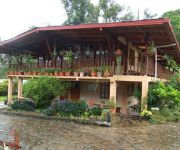Facts and Data
Webpages:
Official Unesco Page
Basis Data:
Unesco World heritage since: 2014
Size of heritage: 25 ha
- Buffer zone: 143 ha
Coordinates:
Longitude: -82,523°
Latitude: 8,911°
Summary
The property includes four archaeological sites located in the Diquís Delta in southern Costa Rica, which are considered unique examples of the complex social, economic and political systems of the period AD 500–1500. They contain artificial mounds, paved areas, burial sites and, most significantly, a collection of stone spheres, between 0.7 m and 2.57 m in diameter, whose meaning, use and production remain largely a mystery. The spheres are distinctive for their perfection, number, size and density, and placement in original locations. Their preservation from the looting that befell the vast majority of archaeological sites in Costa Rica has been attributed to the thick layers of sediment that kept them buried for centuries.
Location on Map
Show bigger map on Openstreetmap
Precolumbian Chiefdom Settlements with Stone Spheres of the Diquís
The Precolumbian Chiefdom Settlements with Stone Spheres of the Diquís is a UNESCO World Heritage site located in Costa Rica. This site is renowned for its unique stone spheres, which are scattered across the Diquís Delta region. The coordinates of this site are N8 54 41 W83 28 39.
History
The stone spheres found in this region were created by the indigenous people who inhabited the area between 300 BCE and 1500 CE. These people belonged to the Diquís culture, which was part of the Greater Chiriquí culture. The stone spheres were crafted using a technique known as pecking and grinding, where the stones were shaped by hammering and polishing.
The purpose of these stone spheres remains a mystery, as there is limited information about the Diquís culture. However, it is believed that they held significant cultural and religious importance. Some theories suggest that the spheres were used as status symbols, markers of important sites, or even astronomical instruments.
During the 1930s, the stone spheres gained attention when the United Fruit Company, a banana plantation operator, discovered them while clearing land for cultivation. The spheres were initially seen as obstacles and were destroyed or relocated. However, as their cultural significance became apparent, efforts were made to preserve and protect them.
Current State
Today, the Precolumbian Chiefdom Settlements with Stone Spheres of the Diquís is a protected UNESCO World Heritage site. It covers an area of approximately 800 hectares and includes four archaeological sites: Finca 6, Batambal, El Silencio, and Grijalba-2.
Finca 6 is the most accessible site and serves as an archaeological park. It features a museum that provides visitors with information about the stone spheres and the Diquís culture. The museum showcases several well-preserved stone spheres, allowing visitors to appreciate their craftsmanship and learn about their significance.
Efforts have been made to preserve and restore the stone spheres and their surrounding areas. The site is managed by the National Museum of Costa Rica, which conducts research, conservation, and educational activities. The museum collaborates with local communities to raise awareness about the importance of preserving this cultural heritage.
Despite conservation efforts, some stone spheres have been damaged or stolen over the years. This has led to stricter regulations and increased security measures to protect the remaining spheres. The site is monitored to prevent vandalism and unauthorized excavation.
The Precolumbian Chiefdom Settlements with Stone Spheres of the Diquís continue to intrigue researchers and visitors alike. The enigmatic nature of these stone spheres and their historical significance make this UNESCO World Heritage site a must-visit destination for those interested in Costa Rica's ancient cultures and archaeological wonders.

